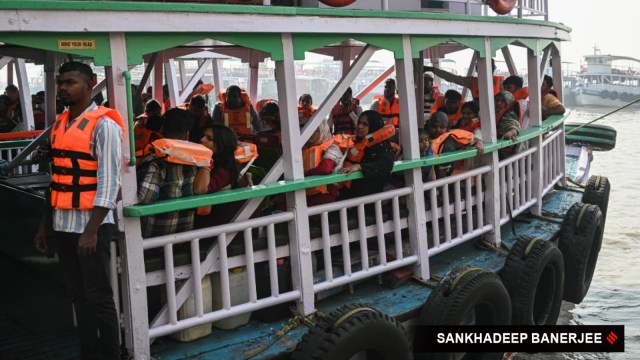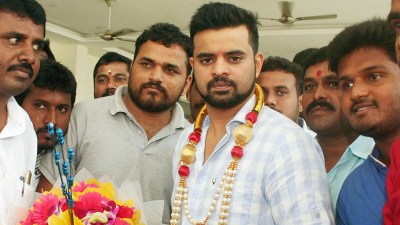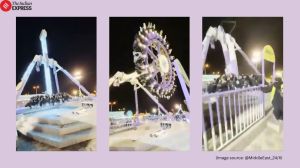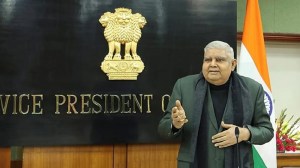Gateway of India to Elephanta Caves: the tourist route on which Mumbai ferry accident took place
The Mumbai ferry accident, in which at least 13 people were killed, took place while the vessel was on its way to Elephanta Caves.
 Tourists wearing life jackets take the ferries to go for some rounds of seafaring in the Arabian sea, at Gateway of India in Mumbai. (Express photo by Sankhadeep Banerjee)
Tourists wearing life jackets take the ferries to go for some rounds of seafaring in the Arabian sea, at Gateway of India in Mumbai. (Express photo by Sankhadeep Banerjee)Hundreds of tourists come to Mumbai in December, with many choosing to visit Gateway of India, which was built in the 20th century to commemorate the landing of King George V and Queen Mary in India in 1911. Its location on the waterfront, overlooking the Arabian Sea, also makes it a popular tourist choice, and many opt for a ferry ride.
The tourists can choose between a quick joyride nearby or travel to Elephanta Caves or Mandwa jetty to the coastal town of Alibaug. The Mumbai ferry accident on Wednesday took place while the vessel was on its way to Elephanta Caves.
At least 13 people, including four women and two children, were killed when an Indian Navy speedboat “lost control” during “engine trials” and crashed into the private ferry heading from Gateway of India to Elephanta Island.
Elephanta Caves or the island of Gharapuri
Elephanta or Gharapuri is an island in the Arabian Sea about nine nautical miles or 11 km from Gateway of India, designated as a Unesco heritage site in 1987.
The 7th-century caves, cutting into the granite hills, are the tourist attraction on the island which has a population of over 1,200. Its name comes from the large elephant-shaped sculpture on the island found by Portuguese navigators, and Gharapuri means a city of caves.
To the east, is Stupa Hill with a small brick Buddhist monument at the top, with two caves, and to the west, is a larger group of caves consisting of five rock-cut Hindu shrines, the ministry says.
According to the Ministry of Culture and Tourism, the caves, “constitute one of the most striking collections of rock art in India”. “The main cave is universally famous for its carvings to the glory of Shiva, who is exalted in various forms and actions,” the ministry website says.
Route to Elephanta Caves
Tourists usually take an hour-long ferry ride to Elephanta Caves from Gateway of India, with ferries operating every 30 minutes to an hour, usually from 9 am, with the last one departing from the island at around 5 pm. After alighting at Elephanta, tourists can take a toy train to the foot of the village or walk. Once in the village, tourists can walk over 100 steps to reach the caves.
Many groups offer day-long trips to the island, with estimates that a million tourists visit the island per year.
The ferries from Gateway of India are the most popular way of reaching the island. Another route is from Belapur to Navi Mumbai. Since Gateway of India is a popular tourist spot, most of the visitors to the island take this route.
Most of the ferries which ply to the island are wooden boats, which usually offer an affordable fare of Rs 100, and above, depending on whether people choose the upper or lower decks. En route, tourists can see commercial ships, including tankers or cargo ships. While returning, tourists get a complete view of the Apollo Bunder, including the Taj Hotel.
Around 80 wooden boats operate on routes to Elephanta and Mandwa, accommodating an average of 2,000 passengers daily — a number that goes up on weekends and holidays.
While life jackets are mandated to be on the ferries for emergencies, passengers are not asked to wear those during the ride, unlike in many tourist boats elsewhere where they are mandatory at the time of boarding.
There have been no incidents of boats capsizing on the Elephanta route recently. In 2020, a boat on the way to Mandwa capsized but all 88 passengers were rescued.












